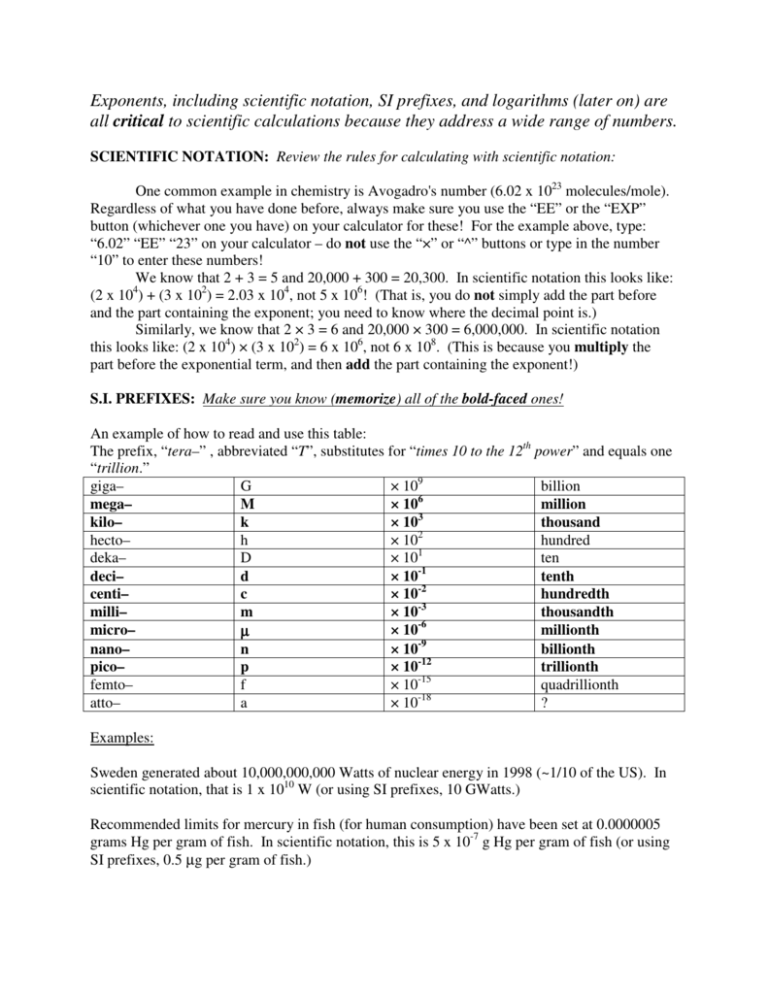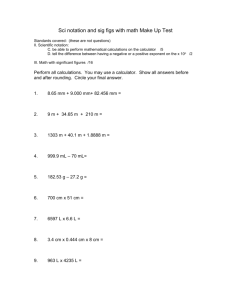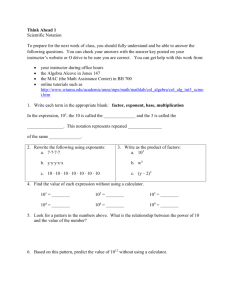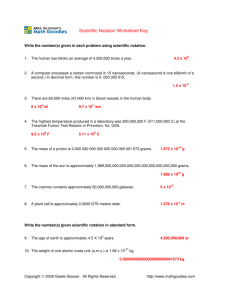Exponents, including scientific notation, SI prefixes
advertisement

Exponents, including scientific notation, SI prefixes, and logarithms (later on) are all critical to scientific calculations because they address a wide range of numbers. SCIENTIFIC NOTATION: Review the rules for calculating with scientific notation: One common example in chemistry is Avogadro's number (6.02 x 1023 molecules/mole). Regardless of what you have done before, always make sure you use the “EE” or the “EXP” button (whichever one you have) on your calculator for these! For the example above, type: “6.02” “EE” “23” on your calculator – do not use the “×” or “^” buttons or type in the number “10” to enter these numbers! We know that 2 + 3 = 5 and 20,000 + 300 = 20,300. In scientific notation this looks like: (2 x 104) + (3 x 102) = 2.03 x 104, not 5 x 106! (That is, you do not simply add the part before and the part containing the exponent; you need to know where the decimal point is.) Similarly, we know that 2 × 3 = 6 and 20,000 × 300 = 6,000,000. In scientific notation this looks like: (2 x 104) × (3 x 102) = 6 x 106, not 6 x 108. (This is because you multiply the part before the exponential term, and then add the part containing the exponent!) S.I. PREFIXES: Make sure you know (memorize) all of the bold-faced ones! An example of how to read and use this table: The prefix, “tera–” , abbreviated “T”, substitutes for “times 10 to the 12th power” and equals one “trillion.” giga– G × 109 billion 6 mega– M × 10 million 3 kilo– k × 10 thousand hecto– h × 102 hundred deka– D × 101 ten deci– d × 10-1 tenth centi– c × 10-2 hundredth milli– m × 10-3 thousandth -6 micro– × 10 millionth µ -9 nano– n × 10 billionth pico– p × 10-12 trillionth -15 femto– f × 10 quadrillionth -18 atto– a × 10 ? Examples: Sweden generated about 10,000,000,000 Watts of nuclear energy in 1998 (~1/10 of the US). In scientific notation, that is 1 x 1010 W (or using SI prefixes, 10 GWatts.) Recommended limits for mercury in fish (for human consumption) have been set at 0.0000005 grams Hg per gram of fish. In scientific notation, this is 5 x 10-7 g Hg per gram of fish (or using SI prefixes, 0.5 µg per gram of fish.)











